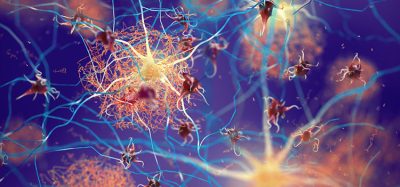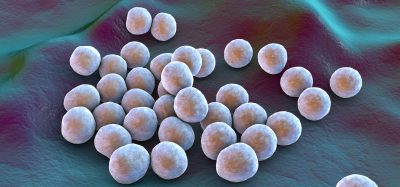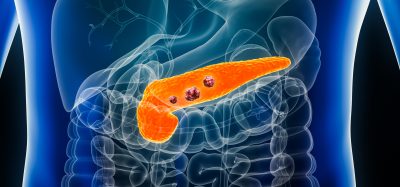New lipid nanoparticles effectively deliver RNA to microglia
Posted: 14 December 2023 | Drug Target Review | No comments yet
LNPs deliver small interfering RNA to the brain’s microglia to combat inflammation related to Alzheimer’s disease.


Scientists from MIT have demonstrated that nanoparticles could be used for a potential Alzheimer’s disease (AD) therapy. A novel LNP formulation effectively delivered small interfering RNA (siRNA) to the brain’s microglia immune cells, which have been difficult to target so far. Also, tests in multiple mouse models and cultured human cells showed that the new LNP formulation suppressed expression of the PU.1 protein, encoded by the Spi1 gene, which is associated with excessive inflammation in AD.
Dr Li-Huei Tsai, Picower Professor of Neuroscience and Director of The Picower Institute for Learning and Memory and Aging Brain Initiative at MIT, is the study’s co-senior author. She hypothesised that LNPs might work to bring siRNA into microglia because the cells, which remove waste in the brain, have a strong inclination to uptake lipid molecules. After discussing this with Dr Robert Langer, MIT’s David Koch Institute Professor, who is well-known for his seminal work on nanoparticle drug delivery, they decided to test the idea of reducing PU.1 expression with an LNP-delivered siRNA.
Optimising LNPs
Making use of an already available drug delivery device would have been the simplest way to test whether siRNA could therapeutically suppress PU.1 expression. However, the researchers discovered that none of eight commercially available reagents could safely and effectively transfect cultured human microglia-like cells in the lab.
Therefore, the team had to optimise an LNP. LNPs have four main components and by altering the structures of two of them, and by varying the ratio of lipids to RNA, the researchers devised seven formulations. Their testing included testing their formulations on cultured microglia that they had induced into an inflammatory state. One candidate that the team named “MG-LNP” stood out for its especially high delivery efficiency and safety of a test RNA cargo.
Testing the LNP formulations’ effectiveness and safety in mice was the next step. The scientists tested two different methods of injection: into the body or into the cerebrospinal fluid (CSF). Injection into the CSF ensured much greater efficacy in targeting microglia without affecting cells in other organs. Among the seven formulations, MG-LNP again proved the most effective at transfecting microglia.
Anti-inflammatory therapeutic
When the scientists ascertained that MG-LNP could deliver a test cargo to microglia both in human cell cultures and mice, they tested whether using it to deliver a PU.1-suppressing siRNA could reduce inflammation in microglia.
“These findings support the use of MG-LNP-mediated anti-PU.1 siRNA delivery as a potential therapy for neuroinflammatory diseases.”
In the cell cultures, a relatively low dose achieved a 42 percent reduction of PU.1 expression, which is good as microglia need at least some PU.1 to survive. MG-LNP transfection did not cause the cells any harm and drastically reduced the transcription of the genes that PU.1 expression increases in microglia, indicating that it can reduce multiple inflammatory markers. The researchers wrote: “These findings support the use of MG-LNP-mediated anti-PU.1 siRNA delivery as a potential therapy for neuroinflammatory diseases.”
In the two mouse models of inflammation in the brain, the researchers evaluated MG-LNP’s performance delivering the siRNA. In one model, mice were exposed to LPS, a molecule that simulates infection and stimulates a systemic inflammation response. In the other model, mice exhibit severe neurodegeneration and inflammation when an enzyme called CDK5 becomes hyperactivated by a protein called p25. Like in the cultured human cells, in both mouse models, injection of MG-LNPs carrying the anti-PU.1 siRNA reduced expression of PU.1 and inflammatory markers.
The team concluded: “MG-LNP delivery of anti-PU.1 siRNA can potentially be used as an anti-inflammatory therapeutic in mice with systemic inflammation and in the CK-p25 mouse model of AD-like neuroinflammation.”
This study was published in Advanced Materials.
Related topics
Drug Delivery, Lipids, microglial cells, Nanoparticles, Neurosciences
Related conditions
Alzheimer's disease (AD)
Related organisations
Massachusettes Institute of Technology (MIT)
Related people
Dr Li-Huei Tsai (MIT), Dr Robert Langer (MIT)








